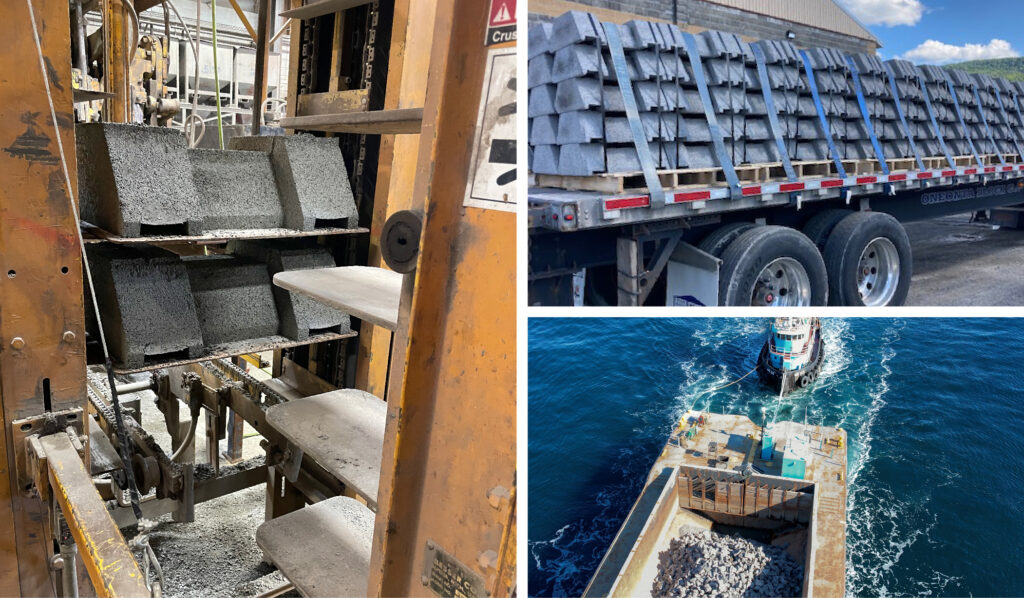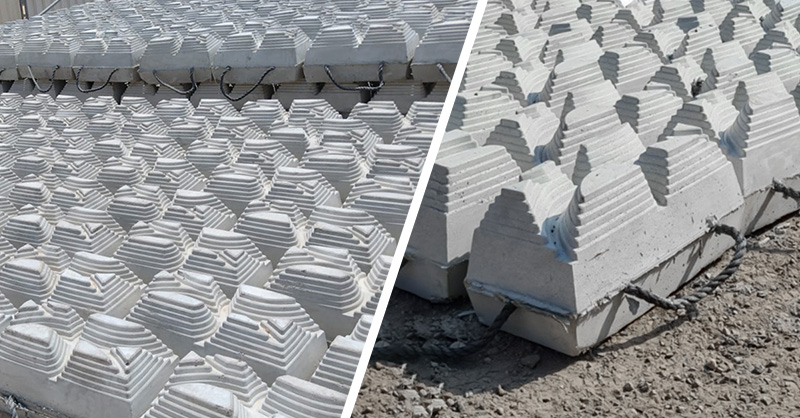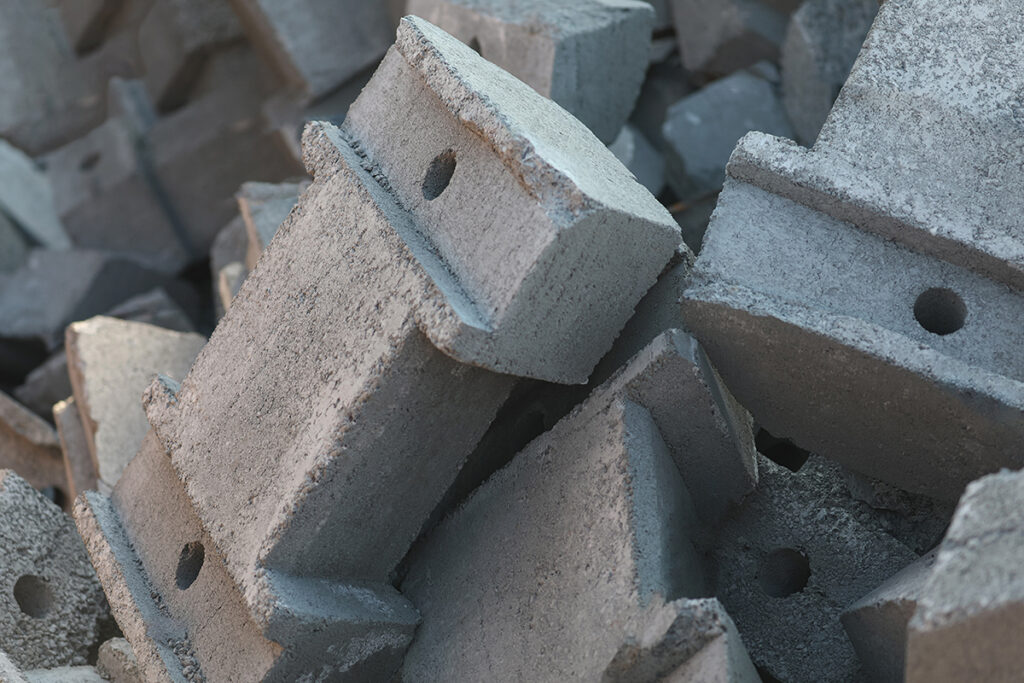When a structure, like an offshore wind turbine and tower, is placed offshore, the structure causes local eddies and an increase of the current and wave motions. This fast-flowing water stirs sand and sediment particles, picks them up and transports them away from the structure, creating a hole around the structure. This phenomenon is called scour.
Undersea cables carry electricity from the offshore wind farms back to the mainland where it is needed. They also carry the vast majority of all intercontinental communication. Subsea cables are vulnerable to many corrosive and erosive forces – both natural and manmade – including particulate scour from currents and sea water egress.
When talking to regulators and decision makers about wind turbine foundations an early query is why not just use ‘natural’ (i.e., quarried) rocks to address this issue rather than concrete?
‘Natural’ rock commonly used for scour protection is not ‘natural’ to the marine environment. The natural rocks’ texture, shape and chemical composition deter marine organisms from adhering and forming habitat niches. Introduction of these materials is usually associated with invasive species and low biodiversity.

Droplock units are manufactured on-site and deployed by any standard vessel.
ECOncrete scour and cable protection solutions provide a unique range of commercial and ecological benefits. ECOncrete’s Droplock Scour Protection is the result of a two-year R&D project to provide offshore wind projects with ecologically advanced scour protection. Design and engineering commenced in May 2021 and is funded by the Binational Industrial Research and Development (BIRD) Energy Foundation with the participation of the US Department of Energy.
ECOncrete’s bio-enhancing concrete technology has been extensively researched and tested in the past 10 years in various environments and over 40 projects. Results on the positive ecological benefits and superior structural performance were published in numerous studies and peer-reviewed papers, both in academia and by third party laboratories.
- ECOncrete’s Droplocks made from bio-enhancing concrete attract marine organisms and plants – quickly producing a vibrant, net positive, marine ecosystem.
- ECOncrete Droplocks are manufactured on-site by local workforce. This creates investment into the local economy AND reduces the risks and costs associated with sourcing and transporting traditional rock material. Carbon capture and storage can be applied readily to further reduce the ecological footprint of the solution.
- Any standard scour protection installation vessel, labor and equipment procedures can be used to deploy the Droplock. The Droplock units integrate ECOncrete’s proven, patented, bio-enhancing admixture, surface complexity and overall design optimized for habitat creation for a wide range of organisms.
- The Droplock units are designed to interlock, to reduce the foundation’s scour protection footprint on the seafloor compared to rock and to minimize the total material required, while creating ecological habitat opportunities. The reduced footprint and resources benefit the project’s ecological and economic bottom line.

ECOncrete articulated concrete block mattresses.
To examine the ecological and structural performance of the Droplock to natural rock, over 1000 metric tons of bio-enhancing Droplock and rock-material for scour protection were deployed off Long Island, NY, more than 100ft deep in October 2022. The Droplock is currently undergoing ecological monitoring for the next two years, to set new standards in responsible marine construction. Periodic remote operated vehicle (ROV) imaging and observation provides results of biological colonization and structural properties.
Independent regulators and validators, such as the Nature Conservancy (Nature-Based Designs for Augmenting Offshore Wind in the United States); Nature England (Scour and Cable Protection Decommissioning Report); and the Government of the Netherlands (Nature-Inclusive Design for Offshore Wind) recommend ECOncrete’s patented admix and technology, for its nature-based designs and the ability to enhance biodiversity and ecosystems.

Droplock scour protection is designed to outperform rock and create habitat for a diverse ecosystem.
